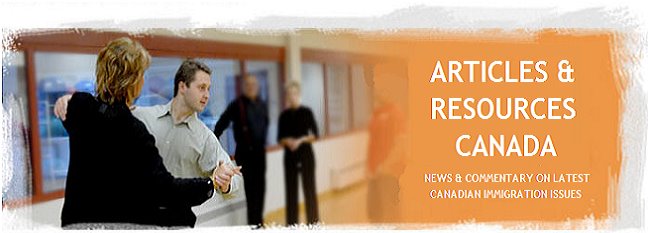According to the latest language reports from Statistics Canads’s 2006 census, Canadians speak over 200 languages.
For the first time in Canadian history, allophones (people whose first language is neither French nor English) represented 20 per cent of Canada's population, while continuing slight decline in the proportion of English and French speakers reported. The proportion of Anglophones (people who reported English as their mother tongue) in 2006 was 57.8 per cent, down from 59.1 per cent in 2001, while the proportion of Francophones (people who reported French as their mother tongue) decreased from 22.9 per cent to 22.1 per cent.
In 2006, 70.2 per cent of the country's foreign-born population were allophones, up from 67.5 per cent in 2001. In total, the census enumerated 6,293,110 allophones, an increase of 18 per cent, or 958,265, from 2001. This increase was three times the growth rate of 5.4 per cent for the population as a whole between 2001 and 2006, and well above the 12.5 per cent gain in allophones during the previous five-year period.
Cantonese, Mandarin and other dialects made Chinese is the third most common first language in Canada, rose to about 1,034,000 up 162,000, or 18.6 per cent of allophones over 2001. Also, Chinese language speakers account for 3.3 percent of Canada's population, up from 2.9 percent five years ago.
Italian fourth and German remained the fifth most common first languages in Canada. The number of Canadians who speak Punjabi, the sixth most common first language, grew by 34.4 per cent since 2001. Rounding out the top ten were Spanish, Arabic, Tagalog and Portuguese. However, between 2001 and 2006, language groups from Asia and the Middle East recorded the largest gains.
Of Canada's overall population, 9 out of 10 speak English or French at home. Two-thirds (66.7 per cent) of the population spoke English most often at home in 2006, down from 67.5 per cent in 2001. Just over one-fifth (21.4 per cent) of the population spoke French most often at home at the time of the census, down from 22 per cent in 2001. Only 11.9 per cent of the population spoke a non-official language most often at home. However, this was up from 10.4 per cent in 2001, mainly the result of the increase in immigration.
Among allophones, 69 per cent of them use French or English on a regular basis and 40 per cent of them speak one or the other at home.
In Quebec, 81.8 per cent of the population spoke French most often at home, a decrease from 83.1 per cent in 2001. About 10.6 per cent spoke English most often at home, virtually unchanged from 2001. The remaining 7.6 per cent spoke a language other than English or French most often at home, an increase from 6.5 per cent in 2001.
Friday, December 7, 2007
Language diversity changing face of Canada in new century
Posted by
Salman Hussain
at
10:36 PM
![]()
Labels: canadian immigration, census, language diversity, newcomers, statistics
